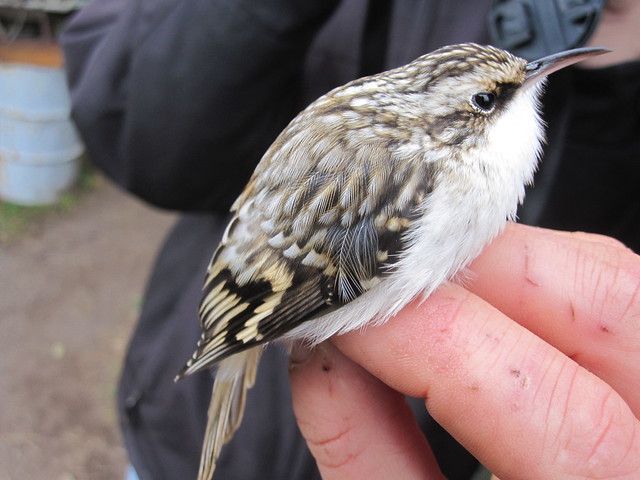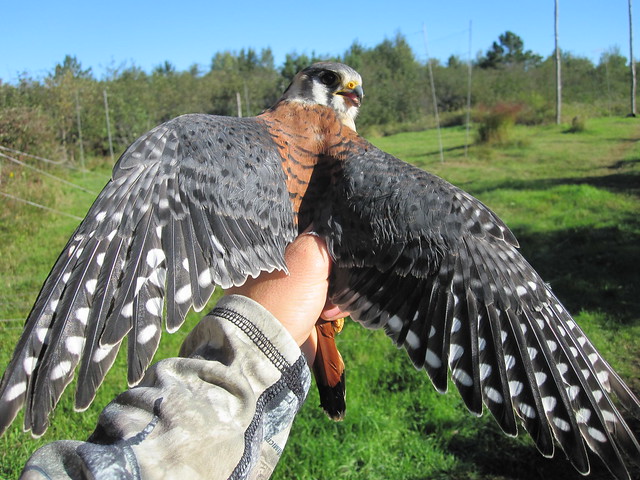We've started up with owls full time now, so the station is fully functional for 24 hrs a day. We've been averaging about three saw whets a night but I have yet to take any presentable pictures of them yet, the red eye effect is hard to avoid with owls. Weird, right?
On the sharp shinned side of things it looks like we may have hit our peak already. The number of birds we catch is greatly dependent on the weather, but despite what seems to have been decent winds the birds still do not seem to be flying. Some of the reduced numbers that the station has been experiencing in the past 5 years is weather related, some of it is a function of another bander about one mile upstream of us. But what is probably the greatest influence is simply the loss of suitable habitat in the north which results in poor breeding seasons and a great reduction in total populations. It's sad and Fud definitively stated last night that "the good old days are gone." In the heyday of trapping in the 70s and 80s this station would have the occasional 300 bird day, ending the season with two to four thousand shins. In 2007 they had three days of 100+ birds, but since the bander upstream moved even closer after that year, breaching 100 is somewhat of a feat. While the 650+ birds we have caught so far have all been extraordinary, the prospect of many more birds leaves me desiring the experience that Fud and many of the visitors we have gained when global warming did not have such an obvious effect on environment.
As September comes to an end here we will be seeing more and more adult shins, with the adult males arriving soon. As this is happening we will also been seeing an influx of red tailed, northern goshawks, and rough legged hawks. While the numbers we catch will not be as great, these birds are BIG (comparatively at least) and should be a thrill.
Here's a ASY female shin. Very blood red eyes:
















































